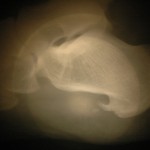Testimonials
REVIEWS OF DR. SCHULER
Healing Your Heel Pain
Back in February 2011 this article ran national
According to the American Academy of Orthopedic Surgeons website, every mile you walk puts 60 tons of stress on each foot (http://orthoinfo.aaos.org/topic.cfm?topic=a00159#Diagnosis). If you pound your feet on hard surfaces playing sports or wearing ill-fitting shoes, you may develop heel pain. The pain can worsen if people persist in performing activities that caused their original heel pain. When you continue to walk or exercise on a sore heel, it can become a chronic condition leading to more problems. A sore heel will usually get better on its own without surgery if you give it enough rest. But if you have other chronic foot conditions that cause or exacerbate heel pain, rest may not be enough treatment to eliminate the pain.
For example, some of us are born with a short first metatarsal bone (Morton’s Toe). Morton’s Toe is a chronic condition that will not go away (since this involves the length of your actual toe bones) so your heel pain can persist if you ignore your short first toes. Dr. Burton S. Schuler, author of Why You Really Hurt: It All Starts in the Foot, states that there is a strong connection between tor length and heel pain. He feels that this fact has been overlooked by most foot doctors and he invites them to verify the truth of this observation. If they did look for a Morton’s Toe, he feels “they would find one present the vast majority of time their patients appeared with heel or arch pain” ).
Scientifically, it makes sense that a short first toe can have an adverse effect on the foot’s pronation, as Schuler argues, causing heel pain. A certain amount of pronation is absolutely needed for the human foot to work properly because it allows the foot to become a “Bag of Bones” (loose), in order for it to act as a shock absorber as it adapts to all of the different walking surfaces we are on. This adaption (pronation) is only supposed take place for a split second. When it goes on longer than that split second is when we start to have a condition known as Abnormal Pronation (http://www.footcare4u.com/category/abnormal-pronation/). And, as Schuler argues after treating foot problems for more than thirty years, it is abnormal pronation that can be the cause of chronic heel pain. But it can be treated with a simple toe pad

